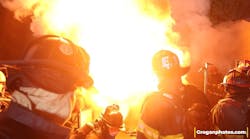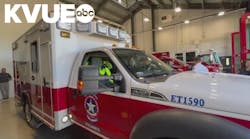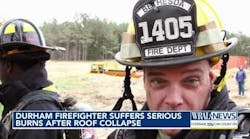With unseasonably warm temperatures in March and April, the potential loss of heavy air tankers for safety reasons and a years-long drought continuing, Western states and the federal government are grimly facing the possibility of another devastating fire season.
"Things are much worse than they were in February,'' said Rick Ochoa, national fire weather program manager for the Bureau of Land Management.
Years of drought have left states across the West vulnerable to extreme fire conditions. About a dozen Western states face the possibility of an above-average fire season, including pockets of Colorado, Wyoming, Utah and Alaska. The greatest threat lies in the Pacific Northwest, the Northern Rockies of Idaho and Montana, and the Southwest, including Southern California, where conditions are the driest.
The Northwest had escaped the early dire predictions thanks to snow blanketing the Cascades. But it now faces dangerous conditions following a warm spring that melted the snowpack a month earlier than usual.
In Washington, the state Department of Natural Resources already has fought 70 small fires this year, up from the usual 20, and forests are as dry as they typically are in late July or early August.
In Oregon, snowpack in the Cascades fell from 120 percent of average in early March to just 53 percent of average on May 1.
"It really is huge,'' said Paul Werth, fire weather program manager for the Northwest Interagency Coordination Center in Portland. "There's really the potential for a large number of huge fires - long duration fires.''
Firefighters in the small, heavily forested community of LaPine, Ore., where a 21,000-acre fire burned to the edge of town last year, already are preparing for a long summer. They've put out four small fires so far this year, and the conditions aren't good, Fire Chief Jim Court said.
"Typically, the light fuels - short grasses and brush - will go up easily,'' Court said. But the so called "thousand-hour'' fuels, such as 6-to-8-inch logs and dead growth, also ignited, leading the district and state to suspend all burning several weeks ahead of schedule.
"We need to prepare ourselves for an extreme fire season - as bad as last year or worse,'' Court said.
Predictions for the Southwest were already bad, and low humidity and hot, dry winds in recent weeks have added to the danger. Early fires already are scorching Southern California, where fire danger usually is highest in the fall when Santa Ana winds blow through.
Wildfires early this month blackened thousands of acres across Southern California and destroyed 28 homes.
The entire state of Arizona and at least the western half of New Mexico are facing above normal and even critical fire danger, according to Chuck Maxwell, fire meteorologist for the Southwest Coordination Center that serves Arizona, New Mexico and West Texas.
Already, the number of acres burned in central Arizona is more than double the number burned last year at this point in the season, despite a decline in the number of fire starts.
"We have triple-digit temperatures, double-digit wind speeds, single-digit humidity - not a very good recipe for a fire season,'' said Kirk Rowdabaugh, deputy state forester for Arizona.
The possible loss of 33 large air tankers won't help. The U.S. Forest Service grounded the tankers May 10 amid safety concerns after two planes broke up in midair in 2002, killing five people. The tankers can drop up to 3,000 gallons of fire-retardant on forest fires.
"Those air tankers were critical for initial attack. They buy time for your fire crews,'' said Dan Ware, spokesman for the New Mexico State Forestry Division.
To prepare for the loss, New Mexico has repositioned crews and equipment around the state so they can respond to fires faster. The state also reached an agreement with the National Guard to keep two helicopters on standby, Ware said.
In Arizona, fire officials hope to bulldoze their way through the fire season. They plan to request $1.5 million from the governor to add more firefighters in rural and volunteer fire departments, as well as bulldozers for at-risk regions to dig fire lines in a hurry.
Even before the announcement the tankers would be grounded, the state had hired four private tankers to boost firefighting efforts.
"If I'd seen it coming, I'd have hired 20 of them,'' Rowdabaugh said. "We're putting more emphasis on bulldozers, but there are environmental consequences. It's not something we'd like to do, but in the absence of the heavy air tankers, it's something we may have to do.''
Fire officials across the West also are working harder to prepare residents for the worst.
"Be prepared - or get prepared,'' said Court, who recalls embers falling on LaPine homes in central Oregon last year. "We're already out there telling people to develop a fuel break around their home. Make sure you're ready in case fire comes to you _ not if, but when.''
Related:





